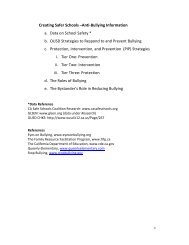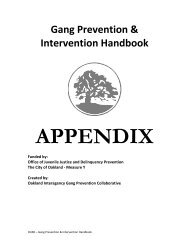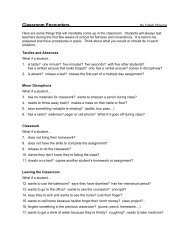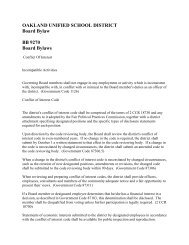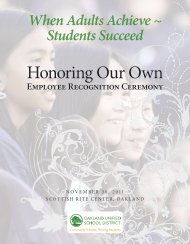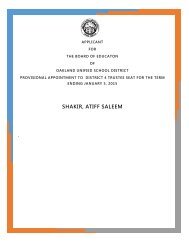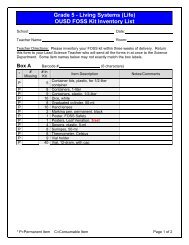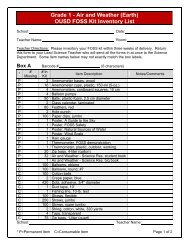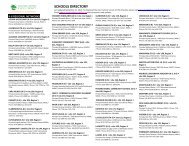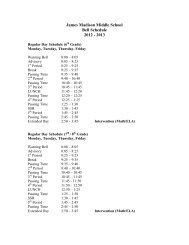Science Framework, part 1 - Free Downloads (CA Dept of Education)
Science Framework, part 1 - Free Downloads (CA Dept of Education)
Science Framework, part 1 - Free Downloads (CA Dept of Education)
- No tags were found...
You also want an ePaper? Increase the reach of your titles
YUMPU automatically turns print PDFs into web optimized ePapers that Google loves.
19peoples, for example, used the principles<strong>of</strong> genetic heredity to improve afew characteristics <strong>of</strong> some crops andanimals, but not until Gregor Mendel’sexperiments on garden peas in themid-1800s were the patterns <strong>of</strong> hereditydiscovered. Mendel’s experimentsmarked the birth <strong>of</strong> genetic science,which has led to today’s high-yieldagricultural technologies and a new erain medicine. The Roman civilizationand other earlier civilizations had theability to combine and utilize raw materials.Only after scientists had sufficientknowledge <strong>of</strong> physics andchemistry to take those raw materialsa<strong>part</strong> and rebuild them on a moleculeby-molecule(or even an atom-byatom)basis did the stuff <strong>of</strong> today’stechnologies—from semiconductorsand superconductors to a bewilderinglydiverse array <strong>of</strong> synthetics—come intobeing.As new scientific principles arediscovered, new technologies can bedevised, and the use <strong>of</strong> existing technologiescan be expanded. The newtechnologies available even in the nextdecade cannot be predicted, but newtechnologies will certainly be needed tocope with foreseeable problems, suchas human population growth, environmentalpollution, and finite energyresources. It is also certain that technologicaladvancements will be neededfor the problems that no one has foreseen.Teachers have the opportunity toincorporate technology, help studentsmaster the science standards, enhancestudents’ abilities to use technologyeffectively, and help students understandthe relationship between scienceand technology. Technology may servethe following functions in education:• Enable teachers and students to haveaccess to the latest information inscience. In grade seven <strong>of</strong> the sciencestandards, Standard 7.b calls for studentsto “use a variety <strong>of</strong> print andelectronic resources (including theWorld Wide Web) to collect informationand evidence as <strong>part</strong> <strong>of</strong> a researchproject.” 1 Any Internet usage,<strong>of</strong> course, must comply with the provisions<strong>of</strong> applicable law and policiesadopted by the local educationalagency (LEA).• Provide students with experience ineffective communication. The investigationand experimentation standardsprovide a range <strong>of</strong> skillsbeginning in kindergarten (“Communicateobservations orally andthrough drawings”) 2 and culminatingin grades nine through twelve (“Selectand use appropriate tools andtechnology [such as computer-linkedprobes, spreadsheets, and graphingcalculators] to perform tests, collectdata, analyze relationships, and displaydata”). 3• Further scientific study in business,industry, and postsecondary education.The technologies used to addressenergy needs are discussed inChapter 4 under “Grade Six,” andchips and semiconductors are discussedunder “Grade Eight.” In thehigh school grades, the science standardscall for students to “know howgenetic engineering (biotechnology)is used to produce novel biomedicaland agricultural products.” 4• Become integrated in instructionwhere it is likely to improve studentlearning. The focus must be on learningscience and using technology as atool rather than as an end in itself.Chapter 2The Nature <strong>of</strong><strong>Science</strong> andTechnology



